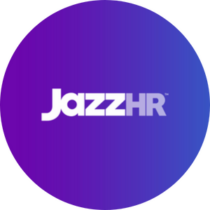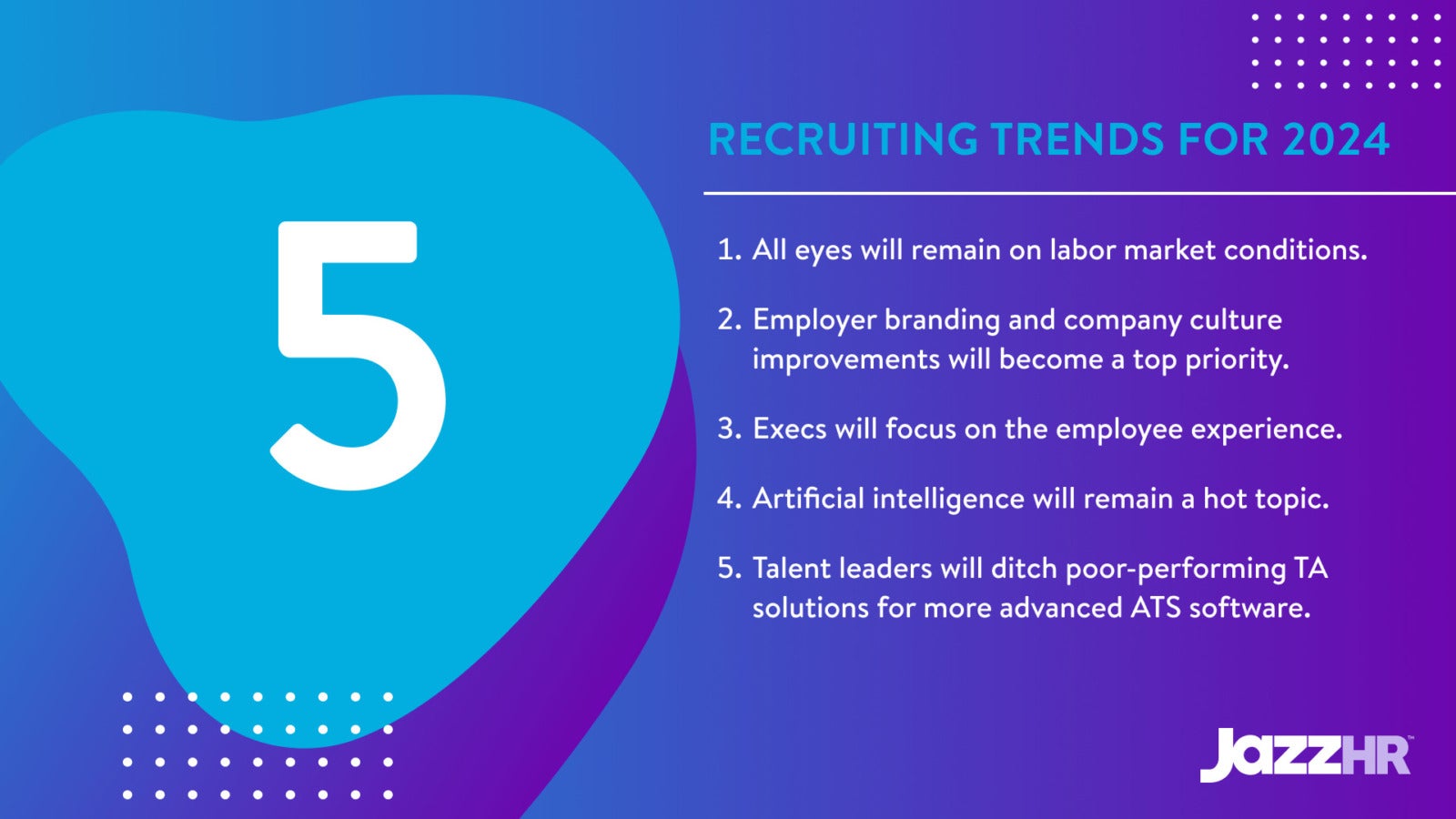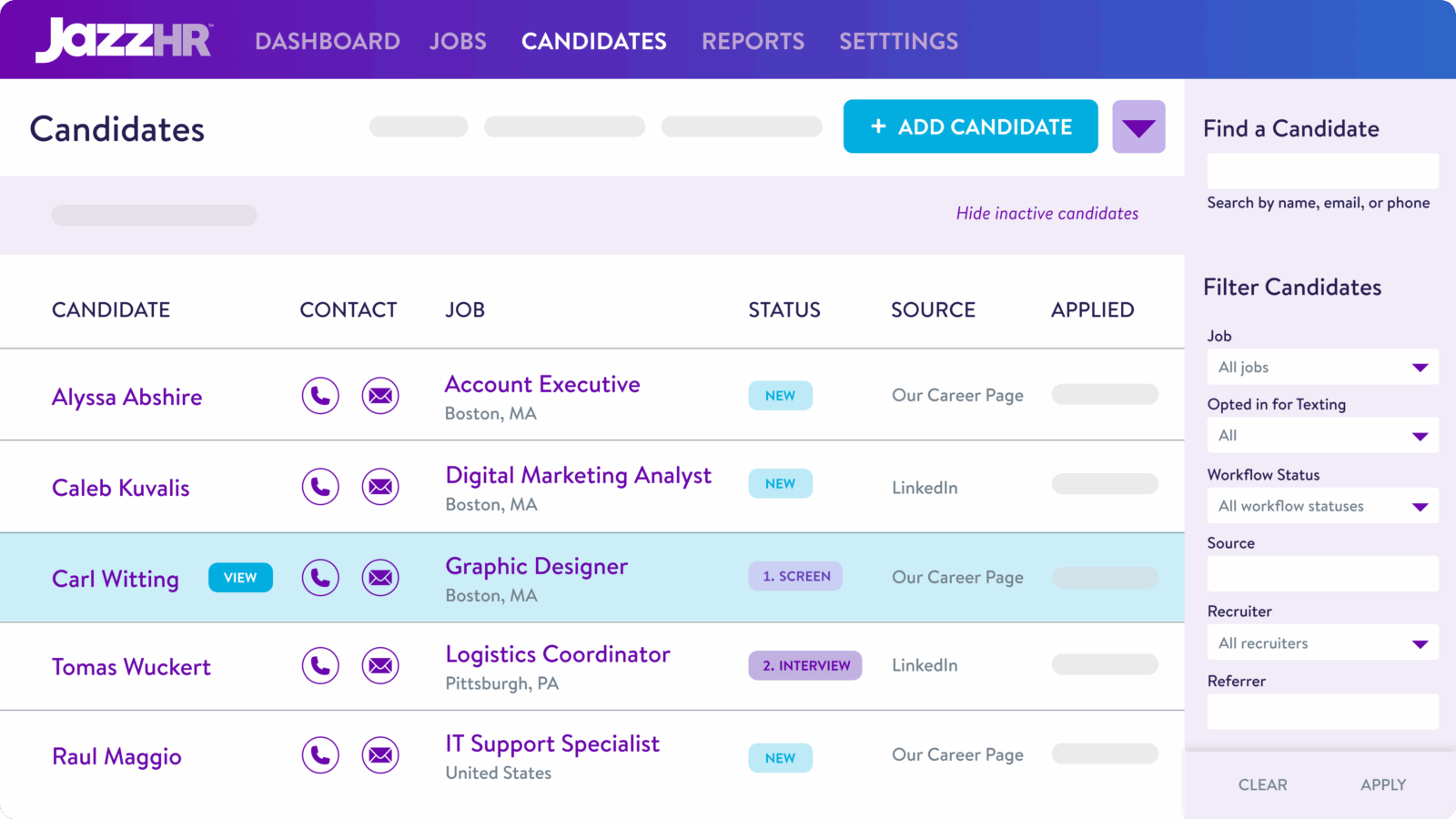
Recruiting Trends That Will Impact Your Hiring in 2024
With each new calendar year comes brand new recruiting trends. Notably, ones that all small business human resources and talent acquisition leaders need to know about, given they each greatly impacts their ability to attract and hire the best job seekers for open roles across their companies.
Sure, there are some “evergreen” trends. (An oxymoron? Perhaps.)
Take diversity, equity, and inclusion (DEI). Organizations of all kinds and sizes have made a concerted effort in the last decade or so to ensure every prospective hire is considered solely on the merit of their qualifications and expertise. And that’s not going to suddenly change for these employers.
Outside of these ongoing recruiting trends, there are others that emerge for more timely reasons.
5 recruiting trends to know heading into 2024
So, without further ado, here are a handful of “happenings” currently affecting all companies (SMBs included) that you and other hiring decision-makers at your org should be aware of heading into 2024.
1) All eyes remain on labor market and economic conditions
It’s no secret the job market and economy have wildly fluctuated from one end of the proverbial pendulum to the other since early 2020. Look at 10 economic and labor market forecasts from “the experts” for 2024 (let alone the next few years), and odds are you’ll get 10 differing opinions on when things will return to a semblance of normality in terms of business and hiring conditions.
All that said, your small business still has to make great hires for teams company-wide in the next year-plus.
So, while there may be few active candidates checking out your job openings in recent months, there’s still plenty your talent acquisition team can do to prepare for the eventual hiring pick-up. (And, trust us: We will emerge on the other side from this maybe-recession at some point.)
Consider your recruiters’ candidate sourcing efforts across channels. Any and every successful sourcing strategy is dependent on recruiters’ not letting their collective foot off the gas. In other words, they must constantly be proactive with identifying and engaging passive prospects.
The math here is simple: The more job seekers of interest you add to your talent pool (ideally, one in a leading ATS that has dynamic candidate profiles), the more “warm” leads your recruiters can simply search for in your database down the line to engage for active and upcoming positions.
2) Employer branding and company culture a top priority
Of course, adding more talent to your candidate pool isn’t entirely in the control of your TA team. Other factors, like your employer brand and work environment, also impact your recruiting process and ROI.
That’s why countless small business leaders — from CEOs to CHROs — will make enhancements to their employer branding and organizational culture a big priority in 2024 (and the foreseeable future).
Do your employees have a strong work-life balance (and, in turn, strong mental health)? Do many active job seekers engage with your presence on the popular social media platforms (notably LinkedIn)? Do your hiring managers effectively explain your employer value proposition in job descriptions?
Asking questions like these (among many others) along with other executives and hiring stakeholders at your SMB is your best path to an improved employer brand perception and reputation.
Moreover, it’s how your leadership team and people managers can ensure your company culture is and remains strong. (Something that many candidates want to see from prospective employers today.)
3) Executive teams place an emphasis on employee experience
Somewhat tied to you culture-centric efforts is the employee experience.
Your SMB talent team (perhaps just a team of one or two) works incredibly hard to find, reach out to, interview, and collect feedback regarding prospects they deem ideal for open roles.
Put plainly, it’s a shame if, when some of those individuals join your business after the hiring process ends, they’re dissatisfied with (or even just unenthused or apathetic about) their work and the org.
That’s why this is one of the top recruiting trends top of mind with C-suites today and in the year(s) ahead: A poor employee experience only leads to low (and worsening) employee retention numbers.
“Retaining current employees typically costs significantly less than recruiting and training new employees and can be accomplished by building a workplace that aligns with workers’ preferences,” Employ SVP People & Talent Corey Berkey recently wrote in a guest post for Forbes.
That’s what your small business has in common with scaling mid-sized companies and enterprise orgs today: Improving retention is a constant battle for just about every employer out there.
And yet, knowing this won’t help you drive down your voluntary workforce attrition rate. The only way to do that is to take action with better engaging and empowering your employees to keep them happy and working on the projects and initiatives that will help them advance in their careers.
4) Artificial intelligence remains a hot topic among employers
No, artificial intelligence (nor the ceaseless conversations around its efficacy and merits for companies like yours) aren’t going away anytime soon. You may be sick of talking about AI (or ever worried about potential negative effects it could have on your workforce and/or business at large).
However, it’s important to stay up to date on all of the latest goings-on related to AI — especially as it concerns your talent acquisition efforts. That’s because leading recruitment platforms continue to augment their solutions with AI-centric capabilities to help recruiters streamline core tasks.
From resume-parsing to automating hiring approval processes, there are increasingly more and more AI use cases for today’s recruiting teams — even those at small businesses such as yours.
(Download our AI and Automation guide to learn how both technologies can actually benefit your org in both the short and long run — and help you scale headcount growth more efficiently and quickly.)
5) Talent leaders will “rip and replace” legacy TA technologies
Speaking of technology, this is another one of those “persistent” recruiting trends: the need to regularly audit one’s TA tech stack — and swap out any poor-performing software for better solutions.
More to the point, you and your HR/TA leadership must routinely (i.e., at least once every 2-3 months) assess whether your applicant tracking system is enabling your entire talent team to work smarter in their day-to-day or deterring them from effectively sourcing, nurturing, and interviewing candidates.
- The speed with which prospects move from the initial screening call all the way to a job offer
- The ease with which recruiters can set up and send personalized nurture messaging to candidates
- The time it takes TA specialists to identify top talent already in their system who are fits for openings
These are all considerations to closely examine with your ATS heading into 2024. If you find your recruiters constantly complain about having to use inadequate, unintuitive, and/or dated recruiting software — and see their individual and team hiring metrics continually diminishing — that’s a clear-cut sign that your SMB is ready for a new, more advanced ATS to replace your existing one.
In the market for a more powerful yet easy-to-use recruitment platform for your talent acquisition team? Chat with us today to discover all that our applicant tracking system for small businesses offers.









